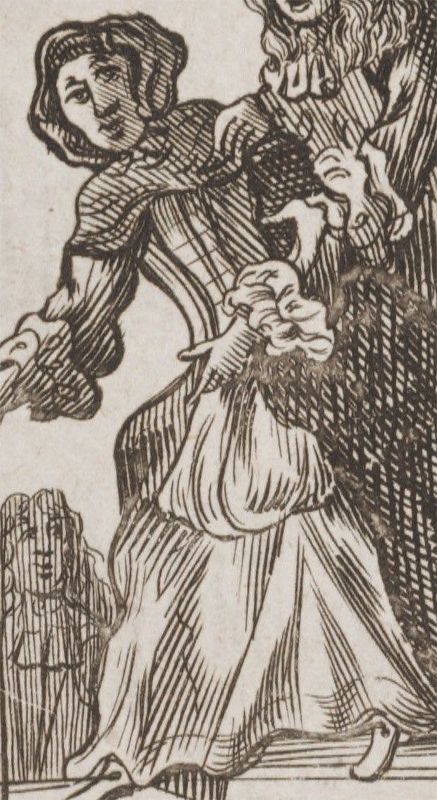Elizabeth Cellier (fl. 1680–?)
Note: the 19th-century biography below preserves a historical record. A new biography that reflects 21st-century approaches to the subjects in question is forthcoming.
Dictionary of National Biography (1885–1900)
CELLIER, ELIZABETH (fl. 1680), ‘the Popish midwife,’ was a member of the Dormer family. She married Peter Cellier, a Frenchman, and became a noted midwife in London. Originally she was a protestant, but she adopted the catholic religion, and at the time of the popish plot fabricated by Titus Oates she visited the prisoners in Newgate, and relieved them through the charity of Lady Powis and other persons of rank. There she found the notorious Dangerfield, whose release she procured upon condition, as he afterwards alleged, that he would enter into an engagement to take off the king, the Earl of Shaftesbury, and some others who were obnoxious to the catholics. Moreover he pretended that he was to be employed in concocting a sham plot, and he stated that the document on which it was to have been founded lay concealed in a meal tub in Mrs. Cellier's house. There the paper was discovered, and from this circumstance the whole transaction is known in history by the name of the Meal Tub plot. On 11 June 1680 Mrs. Cellier was tried for high treason and acquitted, she having satisfied the court that her accuser was too infamous in law to be admitted as a credible witness. She published a vindication of herself, entitled ‘Malice defeated; or a brief Relation of the Accusation and Deliverance of Elizabeth Cellier. Together with an abstract of her arraignment and tryal, written by herself.’ This occasioned the publication of numerous pamphlets, one of which was entitled ‘The Scarlet Beast stripped naked, being the mistery of the Meal-tub the second time unravelled.’ Some passages in Mrs. Cellier's tract respecting the treatment of the prisoners in Newgate exposed her to a second trial (3 Sept. 1680) for libel. She was found guilty, and condemned to pay a fine to the king of 1,000l. and to stand thrice in the pillory. According to Roger North the real object of the second prosecution was to disable her from becoming a witness in favour of the lords in the Tower. Lysons says that she lies buried in the chancel of Great Missenden Church, Buckinghamshire.
She was the author of: 1. ‘A Scheme for the Foundation of a Royal Hospital, and raising a revenue of 5,000l. or 6,000l. a year by and for the Maintenance of a Corporation of Skilful Midwives, and such Foundlings or exposed Children as shall be admitted therein: as it was proposed and addressed to his Majesty King James II in June 1687,’ printed in the ‘Harleian Miscellany’ and in the ‘Somers Tracts.’ 2. ‘To Dr. ——. An Answer to his Queries concerning the Colledg of Midwives,’ London, 4to. Written ‘from my House in Arundel-street, near St. Clement's Church, in the Strand, Jan. 16, 1687–8.’
[Cat. of Printed Books in Brit. Mus.; Dodd's Church Hist. iii. 326; Harleian Miscellany (Park), iv. 142; Howell's State Trials, vii. 1043 seq.; Lingard's Hist. of England (1849), viii. 461–5; Lipscombe's Hist. and Antiq. of Buckinghamshire, ii. 386; Luttrell's Hist. Relation of State Affairs, i. 24, 25, 29, 31, 34, 47, 54, 55, 57, 90, 345; Lysons's Magna Britannia, i. pt. iii. 695; North's Examen, 260–4; Somers Tracts, ii. 243; Watt's Bibl. Brit.]
T. C.
